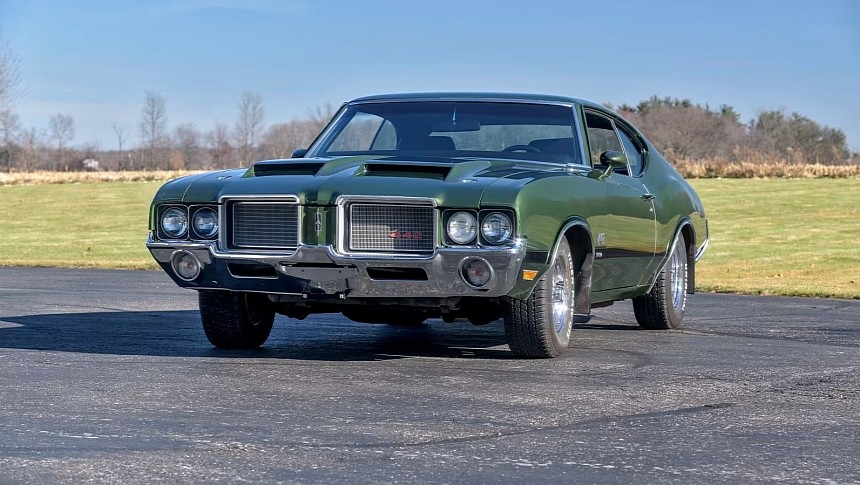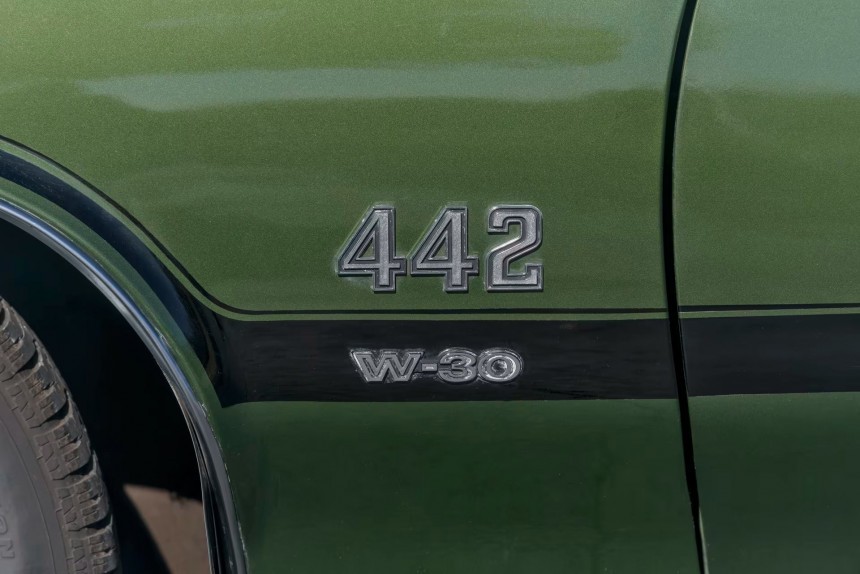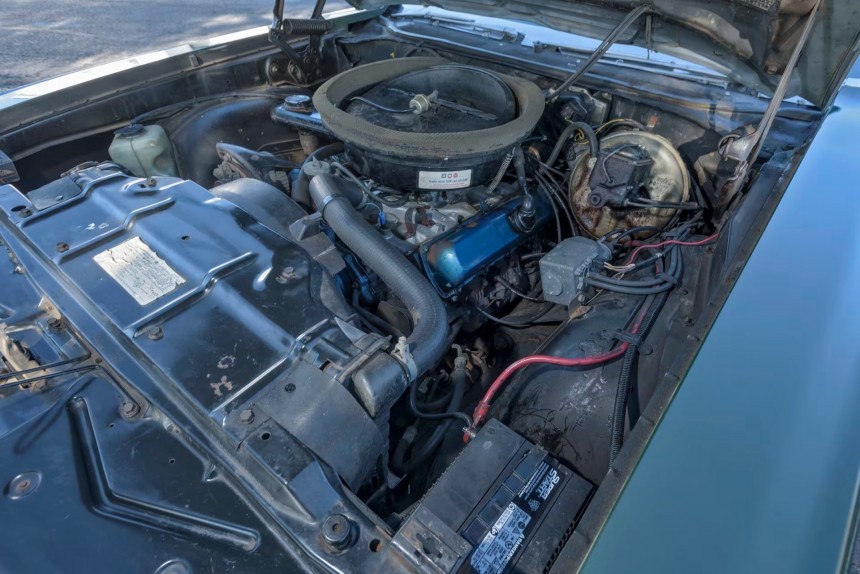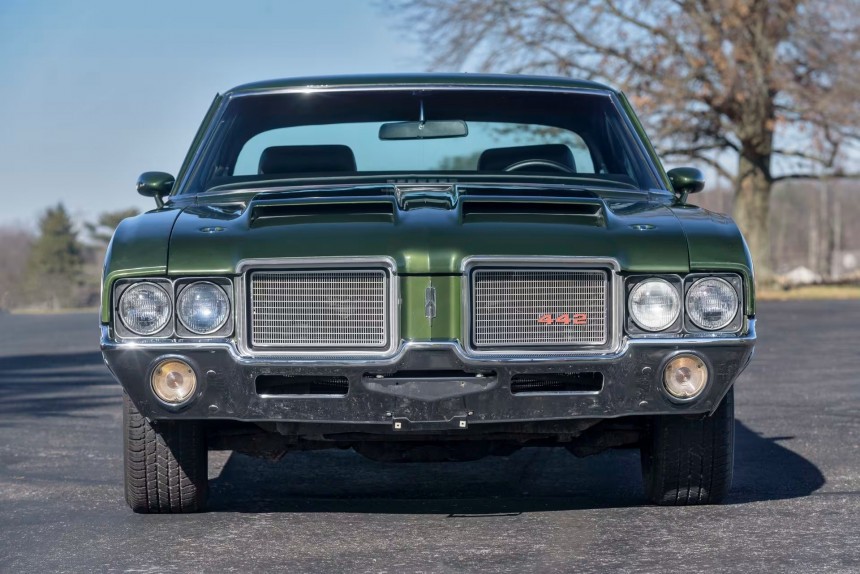If I ask you to name the first number that comes to mind when hearing the word ‘Oldsmobile,’ chances are it will be one of the following: 88 (as in Rocket 88), 4-4-2, or W30. OK, the last one is an alphanumeric value, not a number, but let’s get over the minor details. And what happens when the three are put together? One of the most excellent muscle cars of the seventies - the Olds 442 W30.
You might ask where the 88 fits in the union proposed at the opening of this article. The Rocket V8 is the key: the engine family prophesized the muscle car paradigm in 1949 and lived through that vision in the sixties and seventies. The debate about who put the muscle car into metal could go on forever, but Pontiac gets the first pick.
Technically, the GTO option for the Tempest Le Mans was first on the scene on October 1, 1963. The Oldsmobile response was six-and-a-half months (too) late. The 4-4-2 package was announced in April 1964 at the World’s Fair in New York. It should have been the best place on Planet Piston to spread the word about the ‘hottest number’ since 51,607,307 visitors attended the exhibition during its 18-month time span. But something went horribly wrong there and then.
The 1964 edition of the Official Guide for the New York World’s Fair 1964/1965 opened with this message from the event's President Robert Moses: ‘What is it you want? Vast forces dormant in nuggets of imprisoned sunlight? Machines that fly, think, transport, fashion and do man's work? Spices, perfumes, ivory, apes and peacocks? Dead Sea Scrolls? Images divine and graven? Painted lilies and refined gold? The products of philosophy, which is the guide of life, and knowledge, which is power? We have them all.’
Note the first element in the enumeration: metaphorical combustion engines – cars! Cars were one of the main attractions, period. With such a massive flow of prospects (initial estimates predicted that over 70 million people would come to the fair from April ’64 to October '65), carmakers were bound to be present.
Unlucky for Oldsmobile, the Fair was chosen as the perfect moment to launch a new model by Ford's smart Alecs. Their latest offering on the altar of capitalism was a nice little car called ‘Mustang.’ The Olds 4-4-2 was doomed to the shade as the FoMoCo pony stole the show and ran away with it.
After this rough birth, the 4-4-2 got steam and, slowly but steadily, grew into the celebrity it is now. Contrary to what the decals and emblems suggest, Oldsmobile hyphened the numbers in its sales literature so it’s ‘four-four-two,’ not ‘four hundred forty-two’ or ‘four-forty-two.’ Initially, the numbers stood for 4-speed, 4-barrel carburetion, 2-pipe exhaust. Later in the model’s production, when the three-speeds (manuals and automatics) became available, the initial 4 represented the first number of the displacement size (400 cubic inches – 6.6 liters).
The 4-4-2 option was offered on the Cutlass and F-85, but in 1968, it grew to a distinct model – that was canceled at the end of 1971, with the 442 option being again offered as a Sport/Handling package. However, the W30 add-on was still available – centered around the 455 cubic-incher V8 (7.5-liter) that came around in 1968 and served as the main gun for Oldsmobile muscle until the end of 1976.
At the top of its game, the monstrous motor (sales code L77) was gross rated at 370 hp and 500 lb-ft (375 PS, 678 Nm) in 1970. By 1971, the hottest numbers in the Olds’ ‘Hottest Number’ were showing the side-effects of insurance premiums and emissions regulations: power went down to 350 hp (355 PS), and torque fell to 460 lb-ft (624 Nm). Those were gross ratings, but the ‘as-installed’ specs were even more disappointing: 300 hp and 410 lb-ft (304 PS, 556 Nm).
The W30 performance option was kept for 1972 with unchanged performance, even if the 442 model itself disappeared. The 442 package, however, was ordered on 772 Oldsmobiles that year: 17 Cutlasses and 642 Cutlass S examples (hardtops and coupes), and 113 Cutlass Supreme ragtops. With this small production, it’s quite the event when one of those rare birds shows up, especially when it comes with low mileage and an original survivor aura, like the one we can admire in the gallery.
This Sequoia Green Cutlass S hardtop brags with just 20,704 miles (33,313 kilometers), all covered under one owner. Technically, the first title was issued to the actual owner’s father due to age restrictions imposed by the state of Michigan. The paperwork was updated with the de facto proprietor in Ohio once they got back home.
Other than a ‘highly original condition,’ there’s little information shared about its past; we learn that the car has the original mufflers, wheels, and tires (not installed on the vehicle at the moment, as we can see in the gallery). We can tell by the dual-gate shifter that it’s an automatic (the three-speed Turbo Hydra-matic 400). In a W30-equipped Cutlass S, the automatic transmission option mandated the Anti-Spin rear, either with 3.42 or 3.73 gears.
When launched in September 1971, the Cutlass S had a base retail price of $3,142, and the W30 Performance Package added another $662.46. Apart from the big V8, the option put on a fiberglass ‘Forced-Air’ hood with dual intake scoops, a heavy-duty radiator, manual disc brakes on the front wheels, and a unique paint scheme.
However, in January 1972, the prices decreased slightly: the base MSRP for a G87 body (the Cutlass S Hardtop) dropped to $3,086, and the W30 package was revised to $645. Whether this example is an early-production car is a question for the seller. Same for why it has this low mileage and where it thrived for the past half a century – these can be answered at the Indy 2024 auction in May (10-18), where this 1972 Oldsmobile Cutlass S 4-4-2 W30 will be offered for sale.
Technically, the GTO option for the Tempest Le Mans was first on the scene on October 1, 1963. The Oldsmobile response was six-and-a-half months (too) late. The 4-4-2 package was announced in April 1964 at the World’s Fair in New York. It should have been the best place on Planet Piston to spread the word about the ‘hottest number’ since 51,607,307 visitors attended the exhibition during its 18-month time span. But something went horribly wrong there and then.
The 1964 edition of the Official Guide for the New York World’s Fair 1964/1965 opened with this message from the event's President Robert Moses: ‘What is it you want? Vast forces dormant in nuggets of imprisoned sunlight? Machines that fly, think, transport, fashion and do man's work? Spices, perfumes, ivory, apes and peacocks? Dead Sea Scrolls? Images divine and graven? Painted lilies and refined gold? The products of philosophy, which is the guide of life, and knowledge, which is power? We have them all.’
Unlucky for Oldsmobile, the Fair was chosen as the perfect moment to launch a new model by Ford's smart Alecs. Their latest offering on the altar of capitalism was a nice little car called ‘Mustang.’ The Olds 4-4-2 was doomed to the shade as the FoMoCo pony stole the show and ran away with it.
After this rough birth, the 4-4-2 got steam and, slowly but steadily, grew into the celebrity it is now. Contrary to what the decals and emblems suggest, Oldsmobile hyphened the numbers in its sales literature so it’s ‘four-four-two,’ not ‘four hundred forty-two’ or ‘four-forty-two.’ Initially, the numbers stood for 4-speed, 4-barrel carburetion, 2-pipe exhaust. Later in the model’s production, when the three-speeds (manuals and automatics) became available, the initial 4 represented the first number of the displacement size (400 cubic inches – 6.6 liters).
At the top of its game, the monstrous motor (sales code L77) was gross rated at 370 hp and 500 lb-ft (375 PS, 678 Nm) in 1970. By 1971, the hottest numbers in the Olds’ ‘Hottest Number’ were showing the side-effects of insurance premiums and emissions regulations: power went down to 350 hp (355 PS), and torque fell to 460 lb-ft (624 Nm). Those were gross ratings, but the ‘as-installed’ specs were even more disappointing: 300 hp and 410 lb-ft (304 PS, 556 Nm).
The W30 performance option was kept for 1972 with unchanged performance, even if the 442 model itself disappeared. The 442 package, however, was ordered on 772 Oldsmobiles that year: 17 Cutlasses and 642 Cutlass S examples (hardtops and coupes), and 113 Cutlass Supreme ragtops. With this small production, it’s quite the event when one of those rare birds shows up, especially when it comes with low mileage and an original survivor aura, like the one we can admire in the gallery.
Other than a ‘highly original condition,’ there’s little information shared about its past; we learn that the car has the original mufflers, wheels, and tires (not installed on the vehicle at the moment, as we can see in the gallery). We can tell by the dual-gate shifter that it’s an automatic (the three-speed Turbo Hydra-matic 400). In a W30-equipped Cutlass S, the automatic transmission option mandated the Anti-Spin rear, either with 3.42 or 3.73 gears.
When launched in September 1971, the Cutlass S had a base retail price of $3,142, and the W30 Performance Package added another $662.46. Apart from the big V8, the option put on a fiberglass ‘Forced-Air’ hood with dual intake scoops, a heavy-duty radiator, manual disc brakes on the front wheels, and a unique paint scheme.
However, in January 1972, the prices decreased slightly: the base MSRP for a G87 body (the Cutlass S Hardtop) dropped to $3,086, and the W30 package was revised to $645. Whether this example is an early-production car is a question for the seller. Same for why it has this low mileage and where it thrived for the past half a century – these can be answered at the Indy 2024 auction in May (10-18), where this 1972 Oldsmobile Cutlass S 4-4-2 W30 will be offered for sale.











































